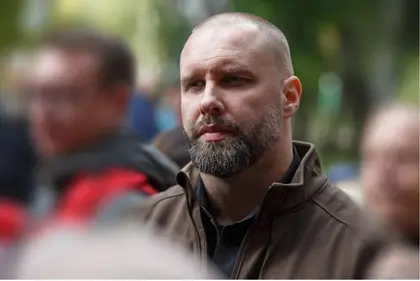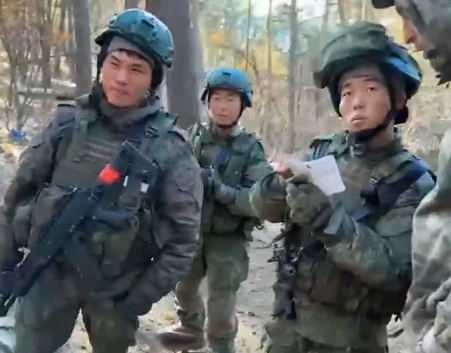In an exclusive interview with Kyiv Post, Oleh Synehubov, Governor and head of the Kharkiv Regional Military Administration, talks about the consequences of the Russian occupation, the terror experienced by the local civilian population, destruction caused by Russian shelling, and the pace of recovery of the liberated territories.
After the liberation of the territories of the Kharkiv Region, there are horrific discoveries. How many people did the Russians kill in total during the occupation of the Kharkiv region?
- See the newest war in ukraine update from the Kyiv Post's news bulletins published today.
- View the most recent Ukraine news pieces that came out today.
JOIN US ON TELEGRAM
Follow our coverage of the war on the @Kyivpost_official.
From the beginning of the full-scale invasion until Sept 29, 1,277 civilians in the Kharkiv Region, including 56 children, were killed by the actions of Russian troops; 2,348 civilians were injured.
Unfortunately, this number is increasing every day. The enemy does not stop shelling the civilian population. People blow up on landmines the occupiers left behind when fleeing the Kharkiv region.
Almost every day, law enforcement officers find new graves, both mass and individual, of people who died during the occupation. In each case, a forensic medical examination is carried out to determine the cause of death, as well as an investigation to establish all the circumstances.
There is information that experts are finding evidence of torture during the exhumation of bodies, is this true? Did the Russians set up torture chambers and keep military or civilian prisoners? How many such torture chambers have been found in the region today?

For the Record – Comments from Biden, NATO Secretary General
In the de-occupied territories of the Kharkiv Region, several places of mass burials of the dead have been found. The exhumation of all the bodies from one such a grave in Izyum, where 447 bodies were discovered, has already been completed. Most of them are civilians. Only 22 are military.
Among the dead were 5 children, 215 women, and 11 bodies were mutilated to such an extent that it is still impossible to determine their gender. All bodies have been sent for forensic examination. If necessary, DNA tests are performed for identification.
A preliminary examination of the bodies revealed at least 30 people with traces of torture. There are bodies with their hands tied. There are bodies with ropes around their necks. There are bodies of men with amputated genitals. Many bodies with gunshot wounds, so it is quite possible that these people were executed. Forensic experts will make the final conclusions.
But even now, there is no doubt that the Russians unleashed absolute terror on the local civilian population in Izyum, and they will surely be punished.
In addition to the mass burial in Izyum, several such graves were discovered elsewhere. For now, we do not name where they are because these burial places are mined. Before starting the exhumation, sappers from the State Emergency Service must work there.
As for torture chambers, the occupiers set them up in all occupied settlements of the Kharkiv region. Everywhere Russian militants set up prisons for residents, where they kept relatives of the military of the Armed Forces of Ukraine and pro-Ukrainian activists, people who did not agree to cooperate with the occupiers, etc. These prisons had unique interrogation rooms where torture was often used.
Law enforcement officers are now documenting all such prisons, interviewing witnesses, and establishing all the circumstances of the crimes.
Some people supported the Russians during the occupation and went to the enemy’s side. Are the traitors of Ukraine being detained? How do the regional administration and police deal with the collaborators?
Unfortunately, some of the citizens joined the enemy during the Russian invasion. Among them were representatives of local government and other authorities. But it is worth emphasizing that these are individual cases and not systemic phenomena. The vast majority of residents in the Kharkiv Region, who found themselves under occupation, refused to cooperate with the enemy under any circumstances.
As for the collaborators, criminal proceedings were opened against them, and suspicions of treason were served from the first days of the full-scale invasion. The most striking example is the mayor of Kupiansk, Hennadiy Matsegora, who surrendered the city to the occupiers. He was informed about the suspicion in absentia on Feb. 28. According to the available information, Matsegora has now been arrested by the Russians, proving that traitors are useless to anyone and nothing good awaits them.
Criminal proceedings have also been opened against other collaborators. Law enforcement officers have already arrested some, and some have fled with the occupiers, but sooner or later, they will be punished for their crimes.
Now law enforcement officers are actively working in the liberated territories, including identifying traitors and collaborators. Each such case will be thoroughly investigated and brought to court. No collaborator will escape responsibility.
Have the Ukrainian troops completely liberated the region’s territory, or are there still military operations?
About 94% of the territory of the Kharkiv Region has been liberated from the occupiers. The enemy still controls about 6% of the territory on the left bank of the Oskil River. Our defenders are liberating these territories as well. Just the other day, the General Staff of the Armed Forces of Ukraine confirmed the liberation of the town of Kupiansk-Vuzlovyi on the left bank of the Oskil.
It was a substantial settlement for the enemy because it served as a railway hub. With the help of this infrastructure, the Russians supplied their occupying forces with ammunition, medicine, food, etc. The loss of Kupiansk-Vuzlovyi became another big logistical problem for the occupiers.
Our military has other successes in the Kharkiv Region, but it is too early to discuss them publicly.
Are Russians currently shelling civilian infrastructure?
Russians fire at peaceful settlements in the Kharkiv region almost every day. Periodically, the enemy launches rocket attacks on the regional center, but compared to the situation in Kharkiv a month ago, the intensity of shelling has noticeably decreased. This became possible thanks to the actions of the Armed Forces of Ukraine, which freed most of the Kharkiv Region from the occupiers.
Now, the population centers located close to the border with the Russian Federation and the contact line are the first to suffer. The Kupiansk district and the city of Kupiansk suffer the most from shelling. The enemy is also shelling populated areas of Kharkiv, Bohodukhiv, and Izyum districts. Unfortunately, civilians die and are injured from these bombardments.
The infrastructure is also being destroyed. Mostly residential buildings. The Russians completely or partially destroyed more than 11,000 buildings, and more than 8,000 were residential. More than 3,000 are apartment buildings, and almost 5,000 are private households.
Also, the enemy has now destroyed 721 educational institutions, 162 health care institutions, and 116 cultural institutions. Critically important infrastructure is also being destroyed: 1,638 objects of life support have already been damaged; these include heat, water, electricity supply, communications, boiler houses, electric substations, etc.
The transport infrastructure was severely affected. Destroyed railway tracks, highways, buses, and railway stations. Eighteen bridges were destroyed.
What damage did the Russian occupiers inflict on the infrastructure of the Kharkiv region? Is it possible to estimate it in some figures?
It is still impossible to definitively calculate the damage to the infrastructure of the Kharkiv Region because the enemy, fleeing from our region, mined everything they could. Currently, the pyrotechnic units of the State Emergency Service are carrying out demining at an increased pace.
First of all, roads and objects of critical infrastructure must be demined. According to pyrotechnicians, almost the entire infrastructure is mined. Most power line poles are mined, not to mention substations and other objects. Currently sappers, risking their lives, defuse several hundred explosive objects every day, but there is still a lot of work ahead.
Unfortunately, we have cases when employees of “Kharkivoblenergo” are blown up by these mines. One of the employees died.
How is the restoration of the liberated territories going, and what are the humanitarian needs?
Immediately after the liberation of the occupied territories of the Kharkiv region, we faced a situation close to a humanitarian disaster. In most of the de-occupied settlements, many houses were destroyed, and almost everywhere lacked electricity, gas, or water supply. The banking system, pharmacies, and most shops did not work. People needed the most necessary things – food, drinking water, hygiene products, medicines, etc.
Literally, from the first day of de-occupation, we organized the shipment of large humanitarian cargoes with food and necessities to the liberated areas. People receive one-time cash assistance.
Our top priority is to complete demining and restore electricity supply in all de-occupied territories. The return of electricity allows us to restore the water supply, restart the banking system, operate postal services, create the pharmacy network, and so on.
Currently, electricity has been almost completely restored in Balakliya and several other settlements. Work is ongoing in Izyum and other cities. PrivatBank and Oschadbank are resuming work in the de-occupied territories. People are already receiving pensions. The post office has started working. In Izyum a mobile hospital will be deployed so that people can get the necessary medical care.
Step by step, we are returning the de-occupied territories to normal life.
You can also highlight the text and press Ctrl + Enter










